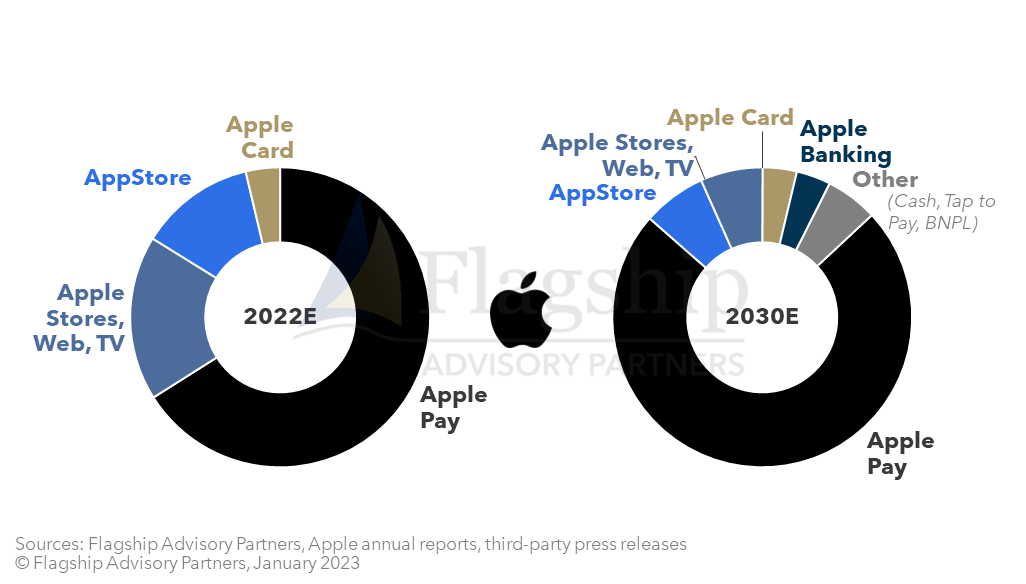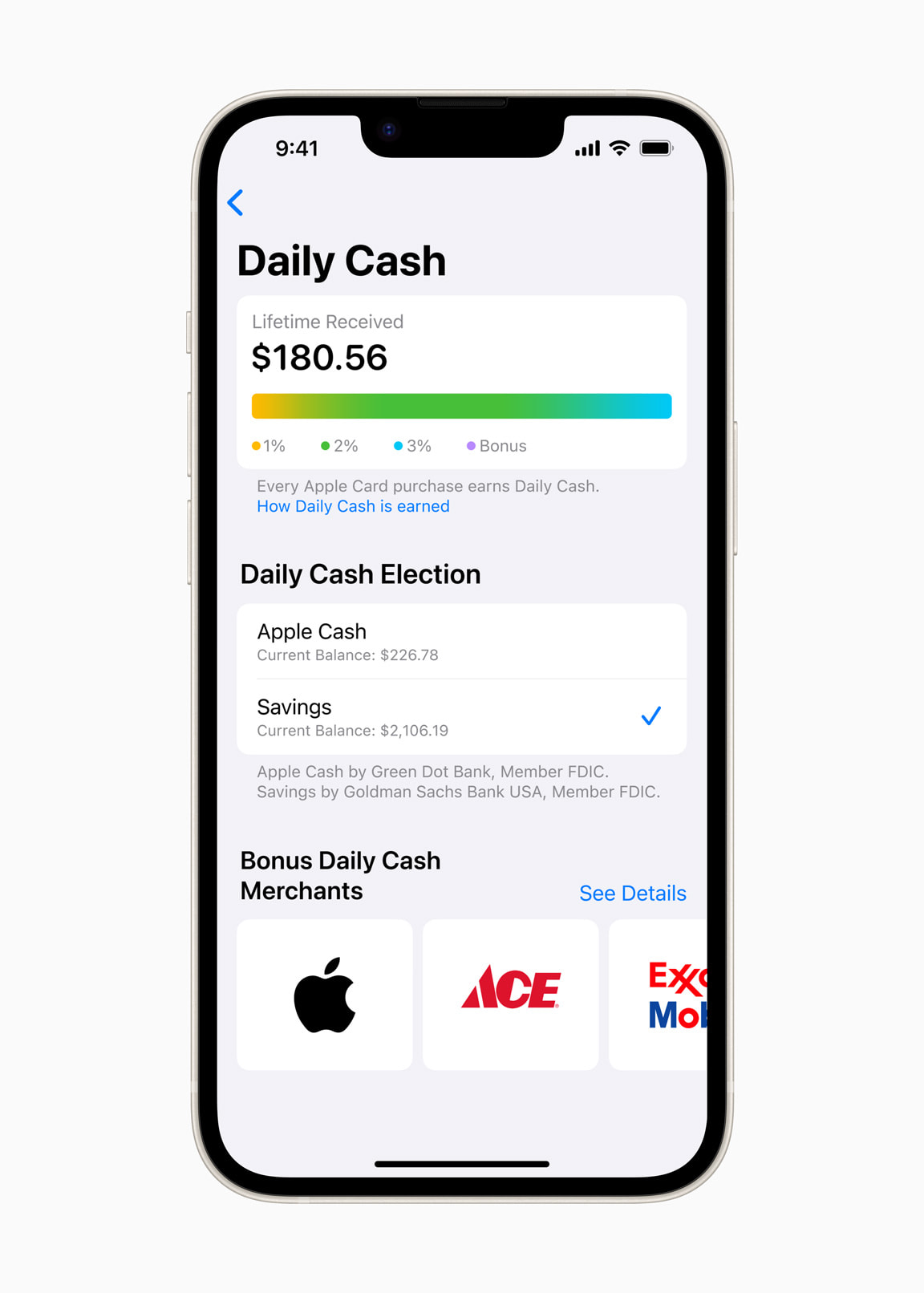
With an Estimated US$800B in Payments Processed Annually, Apple Has Become a Key Actor in the Global Fintech Scene
by Fintechnews Switzerland January 30, 2023In 2022, Apple controlled an estimated US$800 billion worth of payments, making the American technology company a significant fintech player globally, a new report by Flagship Advisory Partners, a boutique consultancy and mergers and acquisitions advisory firm from the Netherlands, says.
By 2030, that amount is projected to soar to US$3.2 trillion, rising at an annual growth rate of 19% from 2022 as the tech firm continue to expand its product portfolio.
The new paper, released on January 11, 2023, looks at Apple’s fintech ecosystem, delving into the firm’s existing products and services, ongoing projects and growth metrics.
According to the report, Apple’s mobile payment service, Apple Pay, currently stands as the company’s largest source of fintech flows, accounting for more than US$500 billion worth of transactions in 2022 and an estimated 30 billion transactions.
These metrics imply that about 3% of all Visa and Mastercard (V/MC) consumer card value and 10-12% of V/MC card transactions in North America and Europe went through Apple Pay in 2022, the report claims.
A comparison with market leader PayPal reveals that Apple Pay has achieved rather impressive growth in a relatively short amount of time. Apple Pay is just under half of the size of PayPal by volume of flows, and yet the mobile wallet has been operational for just eight years, against 24 years for PayPal, it notes.
Introduced in 2014, Apple Pay is a mobile payment service that allows users to make payments in person, in iOS apps, and on the web. The service has risen in popularity at both the physical point-of-sale (POS) and online. In early 2022, the firm claimed that Apple Pay had achieved a 90% penetration rate among US retailers.
Building on this momentum, Apple introduced Tap to Pay on iPhone in February 2022, making the adoption of the mobile wallet even easier for merchants.
Tap to Pay, which allows businesses to accept Apple Pay, contactless credit and debit cards, and other digital wallets with only an iPhone and no additional hardware, has already gained the support of payment platforms Adyen, Square, and Stripe, with more expected to come.
Flagship Advisory Partners has bullish expectations on the growth of Tap to Pay, projecting more than US$60 billion worth of payments via the software POS by 2030.

Apple Tap to Pay illustration, Source: Apple
After Apple Pay, the second largest source of fintech flows are the payments that Apple itself receives as a merchant through its own sales channels. These include the Apple stores, Apple.com, Apple’s music, TV and video channels, as well as the App Store, the report notes.
An estimated US$242 billion worth of transactions was reported in 2022, with the App Store making up for most of the sum at US$100 billion and generating US$25 billion in revenue for the company.

Apple’s Estimated Fintech Ecosystem Volume Flows by Product & Service (2023), Source: Flagship Advisory Partners, Jan 2023
Expanding the consumer fintech business
These past couple of years have seen Apple jumping deeper into financial services, a development that’s evidenced by the firm’s new product announcements, the report notes.
In 2017, the company launched Apple Cash, a solution that allows users in the US to send and receive money, hold an Apple Cash balance and transfer money back to a bank account easily.
This was followed in 2019 by the introduction of the Apple Card, a credit card created by Apple and issued by Goldman Sachs. The card is designed primarily to be used with Apple Pay on Apple devices such as an iPhone, iPad, Apple Watch, or Mac. Currently, it is available only in the US, with 6.7 million American cardholders in early 2022.

Apple Card dashboard, Source: Apple, Jan 2023
Other consumer fintech products are in the works, including the Apple Pay Later, a buy now, pay later (BNPL) solution that will allow users in the US to spread the cost of a purchase into four payments over six weeks, without paying interest or fees; and the Apple Savings account, a “high-yield” interest-bearing savings account that will be administered by Goldman Sachs.

Apple’s Fintech Development Timeline (2023, Select Key Events), Source: Flagship Advisory Partners, Jan 2023
These developments indicate that the tech firm is working on expanding its portfolio of consumer fintech products, the Flagship Advisory Partners report says. It notes that while volumes arising from Apple Card and Apple Cash remain modest with an estimated US$30 billion worth of transactions in 2022, this sum could grow to US$350 billion by 2030 as Apple continues to launch new consumer fintech products.
Looking at Apple’s fintech operating model, the report notes that, so far, the firm has relied on a slew of partners including Goldman Sachs, JP Morgan Chase as well as Visa and Mastercard, to process payments and offer Apple-branded consumer fintech products.
Though evidence suggests that Apple may be looking to reduce its dependency on third parties and banking partners, it is unlikely that the firm will subsume all or most of the value chain roles delivered by partners today, Flagship Advisory Partners says. This is because the collateral damage for becoming a fully licensed bank would be just too great, compared with collaborating with strong partners that are offering increasingly well-designed banking-as-a-service (BaaS) propositions, it says.
In addition to its consumer fintech line, Apple has also been working on expanding its digital identity offering. The Apple Wallet, an app that stores users’ credit and debit cards, loyalty and rewards cards, as well as credentials, saw several developments in 2022, including the launch of driver’s licenses and state identity documentation (ID) on the app. Currently, three US states offer driver’s licenses and state IDs in Apple Wallet: Arizona, Colorado, and Maryland.
Featured image credit: edited from Unsplash





